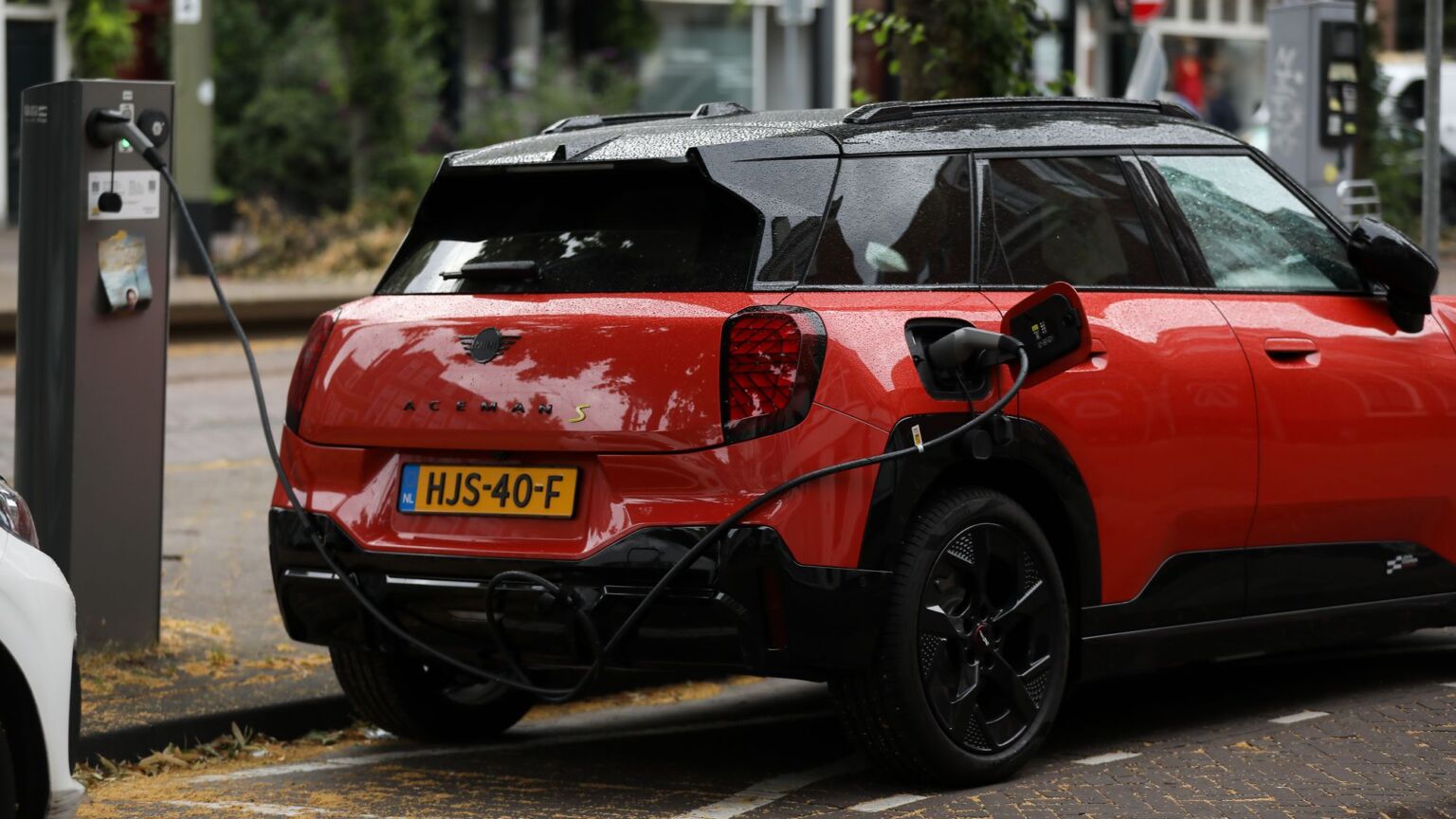The madness of Canada’s electric-car mandates
EVs are almost comically unsuited to a vast, cold country like Canada.

Want unlimited, ad-free access? Become a spiked supporter.
Justin Trudeau’s legacy is alive and well in Mark Carney’s iteration of Canada’s Liberal Party. While the former PM’s deeply unpopular carbon tax may have been scrapped, his spirit of phony solutions to the ‘climate-change crisis’ prevails.
Across the border, US president Donald Trump has nixed any attempts at electric-vehicle (EV) mandates, saying, ‘electric cars are fine, but not everyone should be forced to own one’. By contrast, the Canadian Liberal Party has maintained its plan to ensure 20 per cent of new passenger vehicles sold in 2026 are either battery-powered or plug-in hybrid models. It intends to increase that number to 60 per cent by 2030, and to 100 per cent by 2035.
According to the Canadian government, the aim here is to decrease carbon emissions. The bleak result, however, will be a destroyed automotive industry, lost jobs and less personal freedom.
Like all green ploys, Carney’s won’t come cheap. The Canadian government has invested upwards of $52 billion in its plan, much of that going towards subsidising the manufacture of EVs in Canada. Who will purchase those EVs is another question. A mandate does not create demand, and the automotive industry knows full well that Canadian consumers aren’t buying EVs at a rate that will support the level of production needed to meet the target. In March, Statistics Canada reported a near 45 per cent drop in the sale of new zero-emission vehicles from the year before, with sales in April falling to around 7.6 per cent of overall car sales.
EVs, as is well known, are expensive. While high-income earners might dabble, usually as a second household car, most members of the public are not clamouring for the latest Tesla. Particularly not when so many across Canada are struggling to make ends meet.
Without demand from consumers, the damage to the Canadian car industry imposed by Carney’s mandate could be severe. Vehicles are currently the second-largest Canadian export, with the vast majority heading to the US. Considering Trump has signed an executive order rejecting EV mandates, and recently overturned a California state rule phasing out the sale of new gas-powered cars by 2035, this seems like a surefire way to inflict even more damage on the industry.
Whether it is even possible to create the infrastructure to support a huge influx of EVs is another question Carney has chosen to ignore. For one thing, the government would have to change building codes in order to mandate that apartment buildings install charging stations. It would also need to invest in public charging infrastructure – and by ‘invest’, I mean, of course, appropriate more taxpayer money. Approximately 40,000 public EV charging stations would need to be installed every year between now and 2040 to support the mandate. To put that into perspective, there are currently just 30,000 public EV charging stations across Canada, with only 6,700 installed last year.
There are even more practical issues. Canada is a famously cold and vast country, and EV batteries do not perform well in low temperatures. They charge slowly, and can lose up to 40 per cent of their range. I can’t imagine the prospect of one’s car dying on a long wintery highway commute would appeal to many Canadians.
Instead of confronting the drawbacks of EVs, the same people behind Carney’s mandate would prefer to fundamentally re-arrange how Canadians live. This has led to perhaps their most nuts idea: so-called 15-minute-cities. Supporters of this project claim it makes life more convenient, as everything from grocery stores to schools is within walking distance. They also claim it is better for the environment, on account of reduced driving. This all sounds great on paper – but some are concerned that these ‘neighborhood zones’ might come with limits on who can travel in and out of them, and when they can do so, in attempts to keep carbon emissions low.
This isn’t merely a ‘conspiracy theory’, as some appear to claim. In Oxford, UK, residents look set to need government-issued permits to travel between zones, and even then can only do so a limited number of times per year. One can insist we trust the Canadian government’s intentions – but then again, why would we, given their authoritarian handling of Covid lockdowns? It is hardly surprising that the public is hesitant to back yet another costly, undesired mandate claiming to be ‘for the greater good’.
There is nothing about this plan that makes sense – but then again, little does in Canada. As for me, I think I’ll stick with my big old gas-guzzling truck.
Meghan Murphy is a Canadian writer and the host of The Same Drugs podcast.
You’ve read 3 free articles this month.
Support spiked and get unlimited access.
Help us hit our 1% target
spiked is funded by readers like you. It’s your generosity that keeps us fearless and independent.
Only 0.1% of our regular readers currently support spiked. If just 1% gave, we could grow our team – and step up the fight for free speech and democracy right when it matters most.
Join today from £5/month (£50/year) and get unlimited, ad-free access, bonus content, exclusive events and more – all while helping to keep spiked saying the unsayable.
Monthly support makes the biggest difference. Thank you.









Comments
Want to join the conversation?
Only spiked supporters and patrons, who donate regularly to us, can comment on our articles.